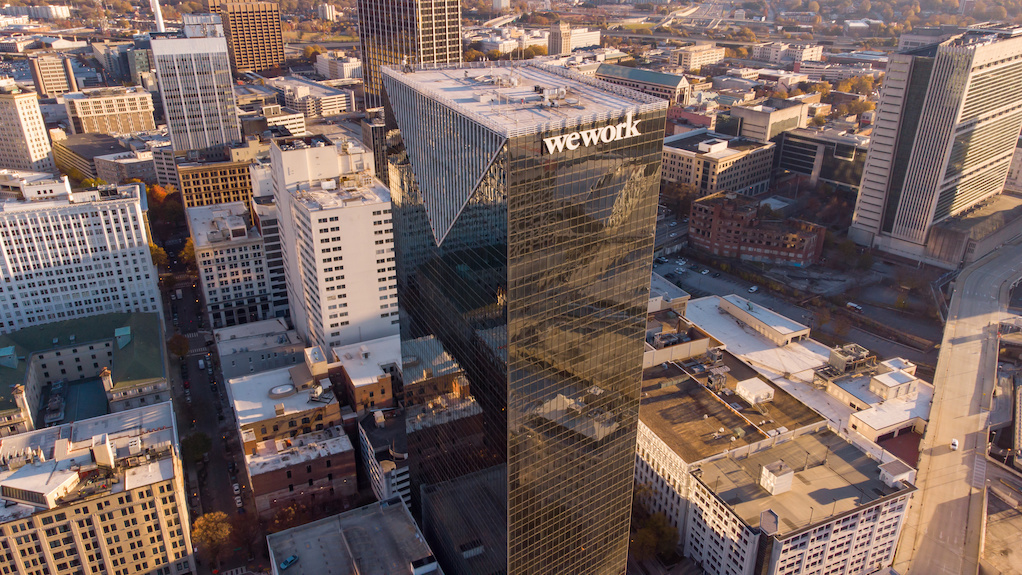In this article, you'll discover:
- Top companies are cutting office space in response to new work trends.
- Businesses are using advanced metrics to optimize office usage.
- Rising office vacancies and subleases create tenant opportunities.
- Tenant Reps can help negotiate better lease terms and right-size space.
In a now fully post-pandemic environment, businesses are now shifting their priorities and making decisions outside of adapting to the new normal.
With companies like Meta and Tesla reinstating more frequent and compulsory in-person visits, return-to-the-office is no longer a question, it’s the inevitable reality for many.
Despite this, an overwhelming number of businesses are planning to slash their footprints in coming years. From the 350 globally leading businesses surveyed (over 50,000 employees), half reported that they were planning portfolio-wide reductions to the size or number of their properties, according to Bloomberg.
So, as the role of the office continues to evolve, many businesses are taking a cautious approach that attempts to both maximize the efficiency of their footprint while prioritizing long-term savings. And what does this mean? Offices still have a role in the future, but they’re likely going to be right-sized to a smaller square footage of what they were in the past.
And because of this a massive wave of unused office space is about to hit the market. Let’s discuss.
New Data = New Ways to Cut Costs
In this new era, businesses are being encouraged to think about the use of their offices in ways that they never could before. From utilization tracking to occupancy metrics, portfolio optimization has taken on an entire new meaning.
Because the Office Apocalypse has awarded the tenant the ability to conduct deep dives into places they weren’t able to look. Take for example an area’s office occupancy metric. Before the pandemic, businesses really didn’t consider the utilization of their spaces to the same degree because since then, an interplay of hybrid and at-home schedules have left offices in varying degrees of emptiness.

The occupancy rate emerged as the method to identify which areas were plagued worse by underutilization. It looks at the percentage of how many employees are occupying leased buildings.
Now, it is in the face of businesses everywhere as a critical factor to consider when identifying which properties and markets are marked with red flags. The occupancy rate is essentially a dormant vacancy rate, and businesses can use it to understand how to position themselves for long-term success.
What's the Relationship Between Occupancy and Vacancy Rates?
But new data empowers companies to not only make smarter long-term decisions, but they can turn inward to make the most efficient cuts to their portfolio possible.
In the pursuit to get clear occupancy data, businesses have access to more advanced means of tracking their own utilization. From card swipes to app trackers, a more nuanced picture of utilization can emerge. This is extremely beneficial for tenants because at the end of the day, what’s measured is managed. By having a more comprehensive view of your own utilization habits and behaviors in specific properties or across a portfolio, businesses can maximize their footprint like never before.
|
“In the current cycle, there’s good utilization data to identify opportunities.” -GlobeSt |
Speaking of advanced utilization metrics: To remain competitive in a tenant-favored and hybrid fueled market, some landlords are offering reduced base rent rates for tenants that essentially “underutilize” their buildings. Will it catch on? Probably not, but it proves how much utilization has become such a big part of the discussion in a largely-hybrid work force. Read about it: Landlords are Offering Rent Based on Occupancy
To stay on top of commercial occupancy trends (and everything else CRE) subscribe to our blog!
The Potential to Save By Right-sizing
Cutting down on wasted space and your overall footprint is one of the most effective ways businesses can unload the stress on their EBITDA. Corporate Real Estate is typically the second or third largest cost a corporation takes on, so of course companies are jumping on the hybrid-work trend. Not only does it keep most employees happy, but it is a massive financial plus.
And the square footage cuts don’t even need to be so significant to see an immediate turnaround in cost-savings.
Let’s return to the top of this discussion with the 350 global firms planning to cut their space. They’re not making sweeping, drastic cuts; they’re making rather modest adaptions to their new utilization needs. And the point is: that this usually enough to save millions in a single property over a lease term.
|
“Of those who plan to reduce their space, most are looking at sizing down between 10 percent and 20 percent.” -Propmodo |
So, to understand how that may look in real-time, let’s run a quick scenario. In New York City, a company analyzes their 100,000 square feet and finds that they’re underutilizing their rentable space by 20%.
Now, NYC has seen some dip in rent costs due to lower demand, but when base rent is still going for $80 per square foot, businesses can’t afford wasted space.
So, if they right-sized their space, their ideal utilization would be reduced by 20,000 square feet. Let’s see how much this could save them (in base rent alone) over a five-year lease:

Right-sizing is enough to make a world of difference in costs.
Office Costs
Because businesses understand how much they can save by shrinking their footprints, demand for new office leases has, of course, dropped significantly. Because of this the office asset class has suffered from extreme devaluation.
|
“Offices on the other hand, have seen a lending window “all but shut.” In some cases, “good industrial buildings in the same submarket of older class office buildings have greater value on a per-square-foot basis, which is practically unheard of if you have been in this business for a while.” -GlobeST |
So, investors would rather work with industrial markets than take a chance on wounded or dying markets marked by the symptoms of high vacancies and low occupancies.
At the same time, since companies are slashing their footprints, where do you think all the office space is going? Well, most of it ends up on the sublease market which is currently oversaturated.
Recently companies including TikTok and Meta put 3 million square feet of office space on the market- and that's in Austin alone!

Just for reference, Meta was one of the companies that are reinforcing physical collaboration by bumping up required office presence to three days per week. So, this points to an interesting dilemma where the role of the office isn’t going anywhere, but in the future it will probably be smaller.
And goes hand-in-hand with the current sublease boom and subsequent office devaluation. And before the office environment can get back up, it’s likely bound to suffer more in the near future. Because since sublease space is usually listed for cents on the dollar, landlords now not only have to compete with each other, but the overwhelming number of cheap leases on the market.
And subleases are an attractive option for tenants right now because:
- Subleases are cheap
- Subleases are usually for less square footage
- Subleases are typically shorter in length
Businesses are adjusting their priorities and while long-term decisions are developed, a cheap premium office with someone else’s name on the lease in the meantime doesn’t seem like too bad an option. So, the option to sublease has been a serious consideration for prospective tenants.
What Office Tenants Should Know
The office vacancy rate is the highest it’s been in decades across the country and going forward it’s going to increase further. As under-occupied leases reach their expiration, consider how many large firms are plotting to cut their square footage.
There is sure to be a tidal wave of office space set to hit the market before 2025. And for tenants this means that they will be exposed to a windfall of opportunities when it comes to office space.
|
In New York City alone, there is currently 94 million square feet of office space empty. -New York Times |
In the coming years, hundreds of millions of square feet of office space will hit the market, so for the prepared tenant the perfect storm is brewing for the lease deal of a lifetime. If competition and cost were ever barriers-to-entry, there’s nothing stopping you now.
With record vacancies, commercial property owners have no choice but to be flexible with their tenants. So, if you plan to retain a physical office presence and are willing to sign on for a longer term, you may be able to renegotiate your space requirements and downsize to your current needs. Or start from scratch and source the market for the properties and locations that will best fit your new streamlined utilization metrics.
The point is that there are new standards of efficiency when it comes to portfolio optimization and now is the time to take advantage.
Right-size with a Tenant Rep
By rethinking their space, businesses are making their CRE spending go further. With not everyone in the office all the time, they can reduce their overall square footage — while increasing the square footage per team member (who is in the office).
If your business is looking to Right-size according to a hybrid-friendly workplace, you should work with a True Tenant Rep™. A Tenant Rep can help you strategically evaluate your properties and where you have room to expand or down-size. Then they will negotiate on your behalf to get you the best deal. Truthfully, the effects of Rightsizing are most successfully achieved when in collaboration with the other two R’s: Renegotiating and Relocating. Learn how the Three R’s can dramatically reduce your CRE costs in a Recession.
At iOptimize Realty®, we are true True Tenant Reps™ with 30+ years of market intelligence. We believe it is a critical responsibility of businesses to remain at the forefront. We have identified how critical including modern features in the offices of our corporate clients. And we can help you benefit the same way. Enroll in the following course to learn how to find your best-sized office space, for the best price.













